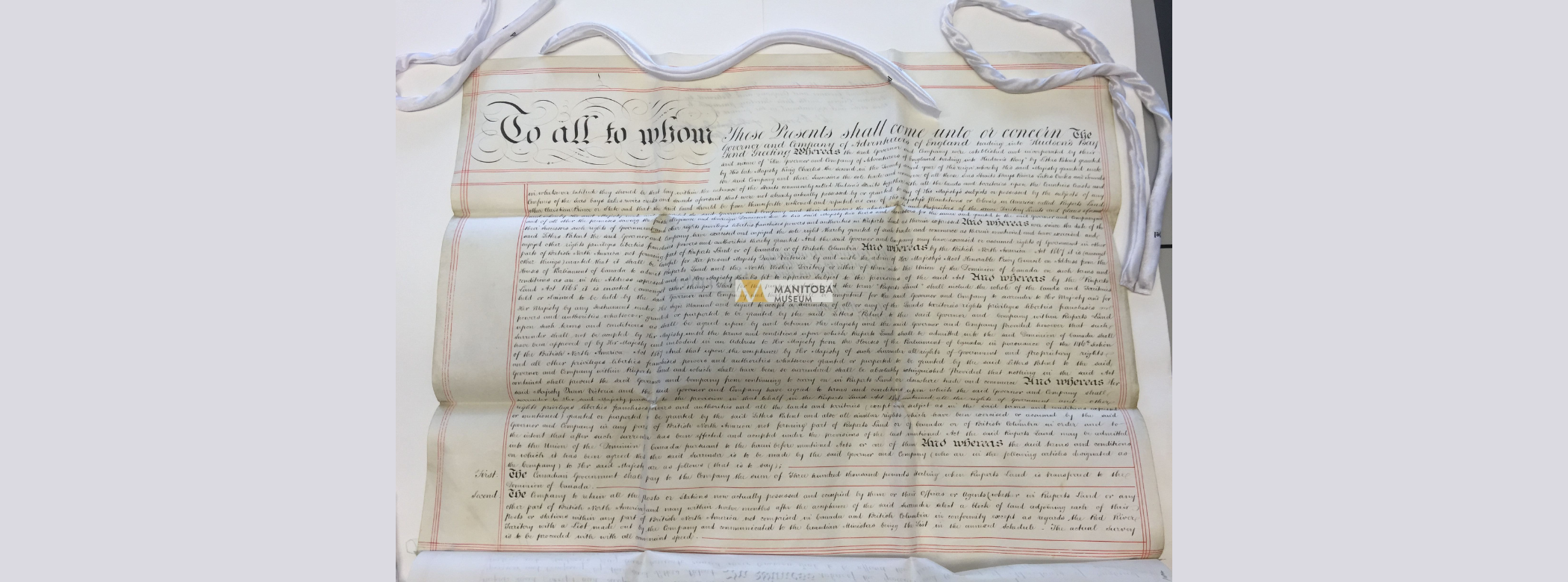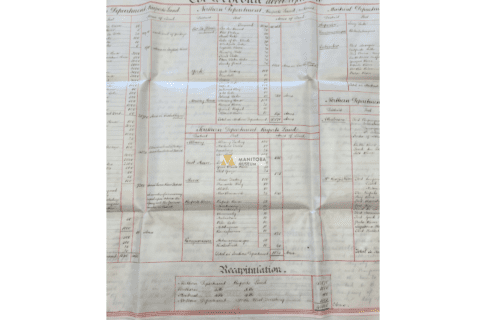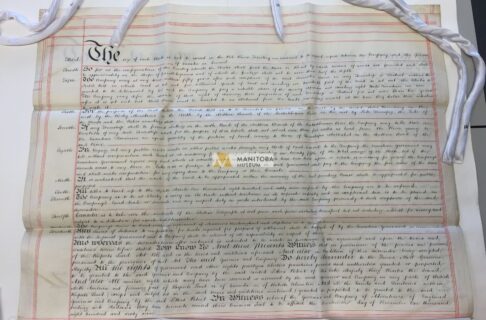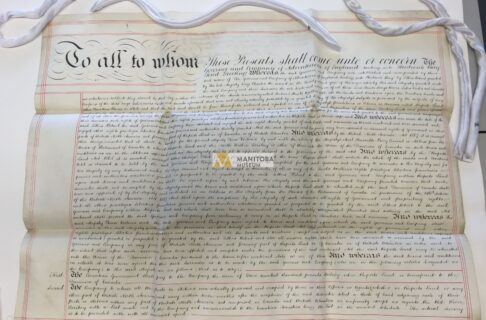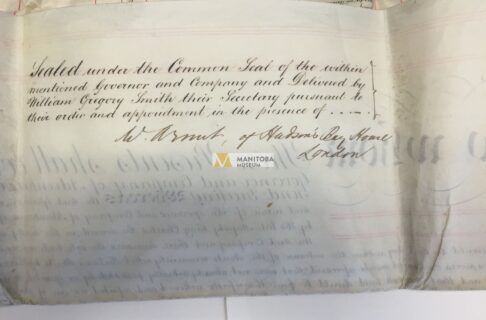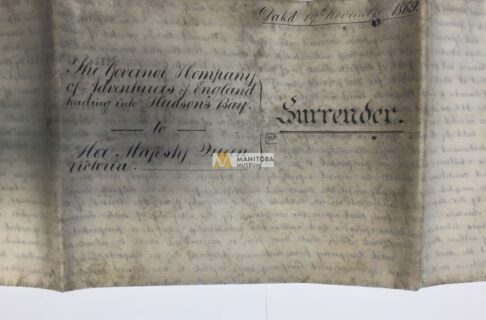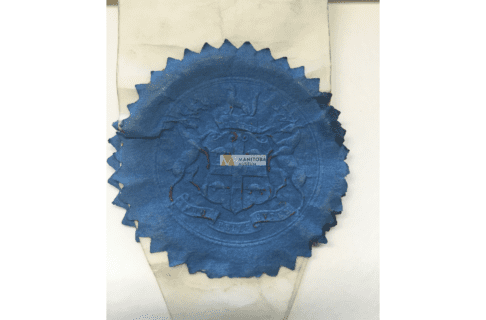2017 marks Canada’s 150th birthday, and to commemorate this anniversary all seven museum curators collaborated on the creation of an exhibit that really highlights what was happening here in Manitoba at the time of Confederation, and the effects of this political shift. Our Legacies of Confederation: A New Look at Manitoba History opened last week, and runs throughout 2017 so you’ll have plenty of time to check it out.
As with any exhibit, there is never enough space to tell all of the stories we want. Instead, each curator will be blogging about an artifact or specimen in the exhibit, or perhaps things that didn’t make it into the exhibit. This post falls into the latter category, as I had the fantastic opportunity to view what I think is one of the most important documents for Canadian history and one that shaped Canada as we know it today.
Last summer during my UK research trip I made a stop at the National Archives in Kew specifically to view this document. I had made an appointment in advance (always advised!) but was very excited to finally visit this incredible institution.
What document am I talking about? The Deed of Surrender (ref # CO42/694). This document outlines the sale of Rupert’s Land (which King Charles II granted the Hudson’s Bay Company in 1670) to the Canadian Government. And here’s why this document is so important, look at this map of Rupert’s Land territory and just think about how different our beloved Canada would look if this transaction had not taken place!

National Archives (UK)

Rough outline of Rupert’s Land (grey area).
The Deed was signed November 19th, 1869 but due to some political disruption right here in Red River, it did not come into effect until July 15, 1870, the same day as the Manitoba Act. The HBC received £300,000 for the land and was able to keep some land along what was called the ‘fertile belt’ (an area bounded by the 49th parallel to the south, the Rockies to the West, the North Saskatchewan River, and Lake of the Woods to the east). HBC was also able to retain the lands around their trading posts and was guaranteed the right to trade without taxation.
Some might ask why HBC was willing to sell their vast empire for such a small price, it seems like a lot of money (especially in those days) but when you consider the natural resources of this 3.9 million square kilometers (roughly 1/3 of Canada today) territory, Canada got it for a steal. Especially when you look at what the US paid Russia for Alaska in 1867, a whopping $7.2 million!
So, what motivated the HBC to go along with this?
Since this post is already lengthy I’ll give you an over-simplified answer. HBC had no interest in governing or additional colonies throughout the territory (to get the full, fascinating scoop I highly recommend HBC Heritage Services and the Canadian Encyclopedia.
How did a very newly formed Canada afford what has been considered the largest real estate transaction in Canadian history?
They received a loan from Britain to facilitate the deal. Hence, the Deed of Surrender is a British Document regarding a transaction between the Crown and a British company, which is why the original is preserved for us at Kew.
A note on the document: the three pages of vellum are stitched together and the entire thing folds into a pouch (which is why there are creases on each page). My photos have been watermarked at the request of the archives, but if you’re not in the UK and want to see the Deed the HBC Archives has a copy.




